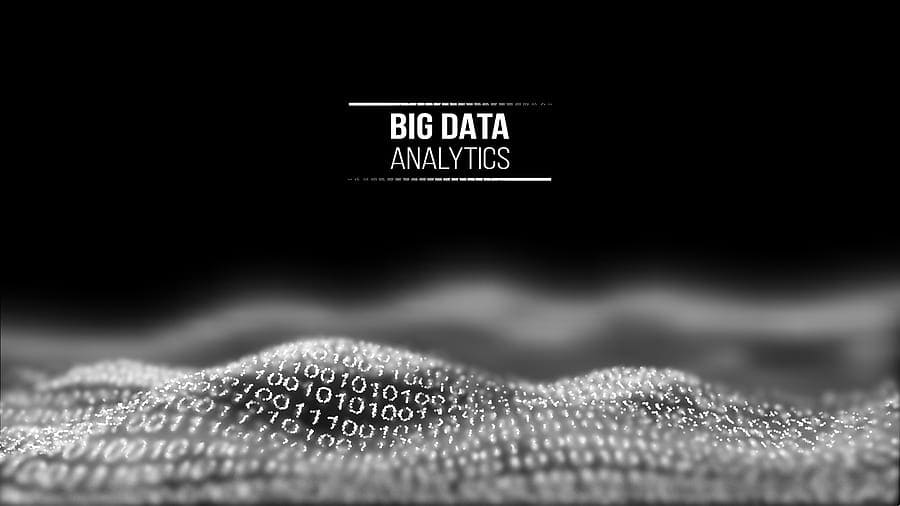Big Data Technology is key to extracting insights and creating value from your data.
Table of Contents
ToggleIn every sector, and for organizations of all sizes, the ability to extract business value from information is now a measure of success. Much of the information that enterprises now have to deal with is big data — information that’s typically too expensive to store, manage, or analyze using traditional database systems of the relational or monolithic type. These historical data management systems often lack cost efficiency and the flexibility needed for dealing with unstructured data (such as images, text, and video), real-time data, and extremely large data volumes.
For the management and processing of today’s information flows, new approaches are required, and the past few years have seen widespread adoption of big data technologies like Apache Hadoop and NoSQL database systems. These technologies continue to evolve, reducing the cost and complexity, which in the past have been associated with the deployment of on-premises data management solutions.
Benefits of Big Data Technologies
Big data technologies provide improved access to potentially unlimited volumes of information and the ability to analyze that data to uncover insights that organizations can use to streamline their business operations, develop new products or processes, and deliver greater satisfaction to their consumers.
With access to ever more information, data analytics technology is able to return greater business value. The availability of more data is also fundamental to the training and improvement of related technologies such as machine learning (ML) models, which can themselves be powered by big data and provide big data technologies with the power they need for their data management and analysis functions.
We’ve alluded to some of the complications typically associated with attempts to manage big data in-house, such as cost and complexity. With the emergence of cloud computing and the “as a Service” ecosystem, cloud big data technologies provide the means for organizations to store, process, and analyze data more cost-effectively, often with greater security and flexibility, along with the ability to scale. And for organizations entering the big data arena for the first time, the cloud offers a way to experiment with managed services, such as Google BigQuery and Google Cloud ML Engine.
Types of Big Data Technologies
Big Data Technologies cover a spectrum of applications and tools that facilitate and implement data mining, data storage, data sharing, and data visualization. The technologies encompass big data itself, plus the data frameworks providing the tools and techniques used to investigate and transform data.
Broadly speaking, there are two major categories of big data technology: operational big data technologies and analytical big data technologies.
Operational Big Data Technologies
These are the technologies associated with the day to day handling of the massive volumes of information generated by various mechanisms. This would include sources like online transactions, social media, or the information stemming from a particular enterprise. Operational big data technologies also act as a pipeline feeding information to analytical technologies.
Analytical Big Data
These technologies are more complex or advanced than their operational counterpart. Analytical big data technologies implement the thorough investigation of massive data sets that’s critical to unearthing actionable insights and delivering business value. Typical examples of applications in this domain are stock market analysis, weather forecasting, and healthcare data management.
Within these two broad categories come the applications and systems that populate the four sub-categories of big data technology — data storage, data mining, data analytics, and data visualization.
Data Storage Technologies
One of the biggest names in big data storage is the Hadoop Framework, developed by the Apache Software Foundation for the high speed and low-cost storage and analysis of the data present in different machines. Hadoop was designed to store and process data in a Distributed Data Processing Environment, using commodity hardware and a simple programming model.

Other major storage technologies include the NoSQL database management format, which offers a direct alternative to the rigid schema used in relational databases. This enables systems like MongoDB to provide flexibility while handling a wide variety of data types at large volumes and across distributed architectures.
Data Mining
In essence, data mining is the process of delving into huge and often unstructured collections of information, with the aim of extracting data that’s relevant to a particular application or use case. These are tools that enable organizations to mine structured and unstructured data that is stored on multiple sources. The sources can be different file systems, application programming interfaces (APIs), database management systems (DBMS), or similar platforms
One example of this type of technology is Presto; an open-source Distributed SQL Query Engine for running Interactive Analytic Queries against data sources of all sizes, ranging from Gigabytes to Petabytes. Another is RapidMiner, which provides a centralized platform with a graphical user interface that enables users to create, deliver, and maintain predictive analytics.
Data Analytics Technologies
Predictive analytics hardware and software solutions enable businesses to reduce or even eliminate the risks associated with decision-making by processing big data for the discovery, evaluation, and deployment of predictive scenarios.
If an organization needs to process information stored on multiple platforms and in multiple formats, stream analytics software facilitates the filtering, aggregation, and analysis of such big data. Stream analytics technologies can also create connections to external data sources and allow their integration into application flows.

One example of data analytics technology is KNIME (Konstanz Information Miner), an open-source tool for enterprise reporting, integration, research, customer relationship management (CRM), data mining, data analytics, text mining, and business intelligence. It supports Linux, OS X, and Windows operating systems.
Another is Apache Kafka, a Distributed Streaming platform written in Scala and Java, with Publisher, Subscriber, and Consumer capabilities similar to a Message Queue or Enterprise Messaging System.
Data Visualization Technologies
Reducing the results of complex big data analysis into a form that can be understood and digested by business stakeholders is the role of data visualization technologies. These typically offer an array of graph and chart tools, reporting generators, and the ability to create user-friendly dashboards.
One of the leading platforms of this type in the Business Intelligence (BI) market is Tableau. It offers real-time collaboration and the ability to blend various data sets (relational, structured, etc.) without any integration cost. In addition to its three main products — Tableau Desktop (for the analyst), Tableau Server (for the enterprise), and Tableau Online (to the cloud) — the platform also offers Tableau Reader and Tableau Public
Where do you find Big Data Tech?
The short answer is everywhere. Organizations in all sectors of the economy are using big data technologies of one kind or another. For example, companies using the data analytics platform KNIME include Comcast, Johnson & Johnson, and Canadian Tire. And among the famous names that use Tableau are Verizon Communications, ZS Associates, and Grant Thornton.
It’s not just big-name brands that are involved. Companies like Extreme Data Technologies (XDT) and the aptly named Cloud Big Data Technologies offer a range of services, including IT assessments, cloud services, Continuity of Operations (COOP), virtualization, and big data infrastructure design, implementation, and maintenance.
Summary:
Big Data Technologies
Big Data Technology is key to extracting insights and creating value from your data. Big data technologies provide improved access to potentially unlimited volumes of information and the ability to analyze that data to uncover insights. Big Data Technologies cover a spectrum of applications and tools that facilitate and implement data mining, data storage, data sharing, and data visualization.





